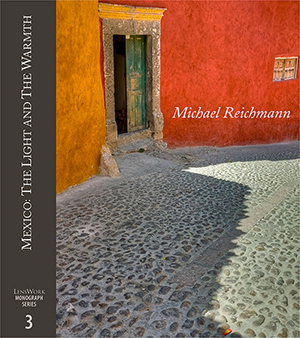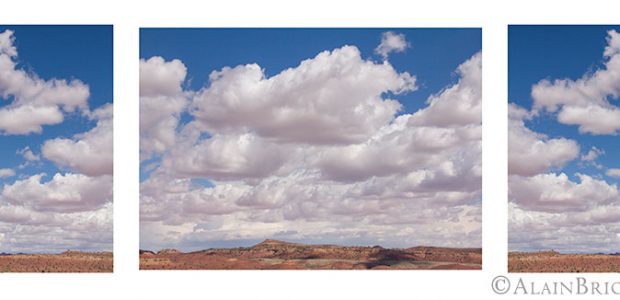A Review by Michael Reichmann
The best way to summarize the newPanasonic Lumix GH4 (Mid-April, 2014 release) is to recognise that the camera is designed to appeal equally to two seperate constituencies – still photographers and videographers.
The Back Story
I always enjoy getting my hands on a new camera for review purposes as soon as pre-production versions become available. But I was out of the country most of the winter, and didn’t return to Toronto until early April. I didn’t have to wait long though. Final firmware lock on thenew Panasonic GH4was April 11, and by April 17 Panasonic Canada was able to loan me a production GH4 with 1.0 firmware for testing. The timing was excellent, because less than a week later we will be on our way to Vancouver, Hong Kong and mainland China, to go on-press for my two new books. You can read about both of these, and about Michael’s new Endowment for Photographers here.
This brief report is based on just a few days of intermittent use. But with the amount of excitement that the GH4 has engendered I thought it worthwhile to publish my intial impressions at around the same time that the camera starts to become available, in the US and Canada. Limited US shipments have already started (April 19) and are due in Canada about two weeks later.
I intend on following-up here with further comments once I have had a chance to both do some serious still photography, and shoot video with an intention beyond simply testing a few basic capabilities.
The Basics
The GH4 builds on the basics of the GH3. Indeed the body looks hardly any different. This is no bad things because the GH3 has always been highly regarded by both photographers and cinematographers for its rugged straightforwardness. It’s not the “prettiest” of cameras, but then that’s not the market segment that it’s after. But in the case of the GH4 beauty lies beneath the skin, and when it comes to features and function what’s on offer is nothing short of spectacular – at least on the video side. The stills side, while not quite as revolutionary, is extremely well kitted out.
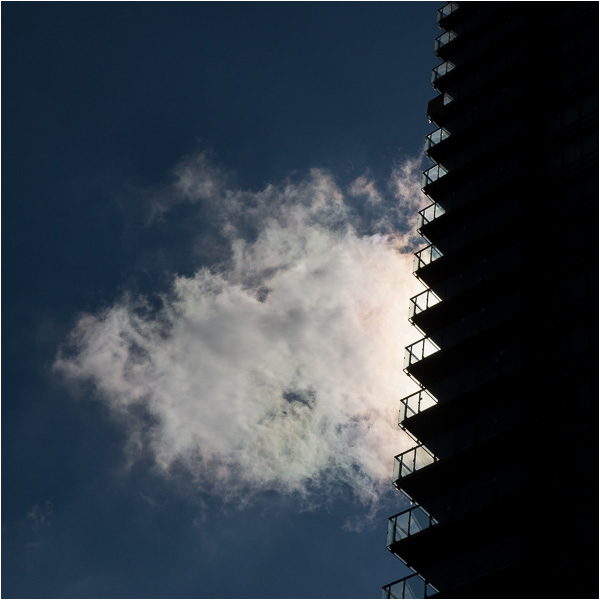
Balconies to Heaven. Toronto. April, 2014
Panasonic GH4 with X Vario f/2.8. 31mm @ ISO 200
Headline features include…
– a new 16MP sensor with new more powerful processing engine
– weather sealed magnesium alloy body
– 200,000 actuation shutter with 1/8000 sec and 1/250 sec flash sync. Electronic shutter available.
– 2.4M dot OLED electronic viewfinder and a 1M dot fully articulated rear OLED LCD screen
– 49 selectable Autofocus points covering almost the entire sensor area
– 4:2:2 / 10 bit video output to an external recorder via HDMI, or 4:2:0 / 8-bit output to the internal SD card, with simultanious 4:2:0 / 8-bit clean output to HDMI
– ultra high speed autofocus with unique with DFD (Depth from Defocus) technology. All Panasonic lenses are profiled so the camera knows the out-of-focus characteristics of each lens, and thus is able to find optimum focus rapidly.
– I-Frame as well as IPB compression with data rates as fast as an astonishing 200 Mbps.
– 4K video in both Cinema 4K 4096×2160 and Ultra-HD 3840×2160 resolutions
– 12 FPS raw stills with up to 100 jpgs, or 40 raws in a burst . 40 FPS JPGs when using the electronic shutter
– variable frame rates up to 96 FPS in full HD or as slow (fast motion) as 2 FPS
– built in intervalometer, time lapse and animation modes for stills and video
…and I think I’ll stop here before we both get bored. Needless to say these are state-of-the-art video specs, and top-of-the-line when it comes to Micro Four Thirds stills imaging.
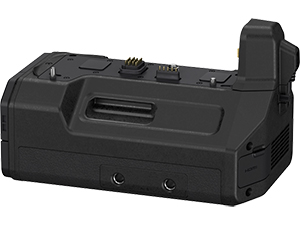
Oh yes, and there’s the YAGH interface unit which attaches to the base of the camera and provides 3G-SDI video and XLR audio connectors.
There’s a lot of jargon and TLAs (three letter acronyms) in the above. If you don’t know what most of them mean then you likely don’t need what the GH4 has to offer. If you do, you’ll recognize that the GH4 provides a remarkable feature and specification set at a highly attractive price point – USD$1,699.
Ergonomics
This is one of my pet topics when it comes to cameras. I shoot a lot, and in a lot of different situations. I shoot in changeable conditions. I need a camera that handles well, has intelligible and configurable controls, and most important of all, had its user interface designed by photographers rather than engineers, or worst of all, marketing executives.
I’m pleased to write that the Panasonic GH4, like its predecessor, handles beautifully. It is loaded with manual controls, and has a large number of hard and soft custom buttons, a total of 10 in all. There is a user-customizable Quick Menu that brings a range of second-tier controls to the screen, and a simple scroll of one of the two wheels, or tap on the touch sensitive screen brings them to action.

The Eyes Have It. Toronto, April 2014
Panasonic GH4 with 42.5mm Nocticron @ f/1.2 and ISO 200
The touch screen is worth mentioning because it adds great flexibility to camera and shooting control. Touch focus, touch exposure, touch shooting, focus area configuration, custom soft key actuation, and selectable display modes are just part of the picture (pun intended). Also, this is one of the few camera that has a fully articulated screen, so that it rotates out to the side of the camera, and can face forward as well.
EVF
The GH4 has a new higher resolution OLED EVF, and it’s quite good. It can be set to a refresh rate of either 30 or 60 FPS. No, it isn’t yet the holy grail of electronic viewfinders, and shadow areas are not as cleanly visible as they would be through an optical reflex finder. But, in most shooting situations it will be found more than acceptable by most users.
Autofocus
The contrast detection AF on the GH4 is as good as I’ve seen from any camera of its type. But, instead of putting phase detection on the sensor itself, the way some camera makers have, Panasonic has come up with a brand new technique called DDF (Depth from Defocus). Essentially what they do is have a profile in the camera’s ROM of the out-of-focus characteristics of every lens that they make. The camera then is constantly looking at the OOF image and judging which direction and how far to move the focus motor based on that analysis.
All Panasonic brand MFT lenses are included in the GH4’s ROM, and any new lenses coming to market after this time will have its OOF information in the lens’ ROM, and this will be automatically loaded when the lens is mounted on the camera. Very clever.
I haven’t done any rigorous comparisons, but the new 49 sensor AF system, which covers almost the entire image area, combined with this new technique, generates fast and accurate AF in my experience.
Video
While the GH4 is a state-of-the-art reflex mirrorless system, fully competitive with the current best-of-breed, such as the Fuji XT or the Olympus OM-D EM1, the GH4 is the moment’s undoubted king-of-the-hill when it comes to video. This is the first camera of its type (and certainly in its price range) to offer in-camera 4K as well as variable speed HD recording.
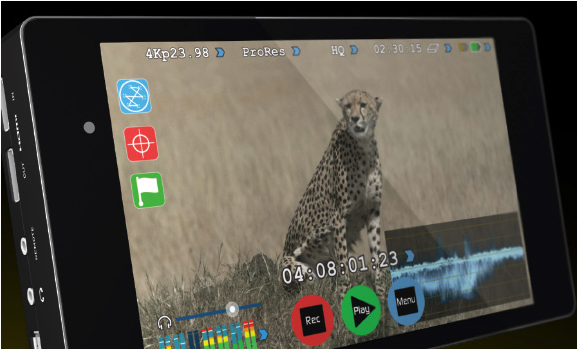
The camera ability to output 10 bit 4:2:2 in either Cinema 4K or Ultra-HD is bonus, but won’t really become useful until outboard recorders like the recently announced Atomos Shogunbecome available later this year (around $2,000). Much has been made of the upcoming availability of 10 bit 4:2:2. It certainly is a step up in potential image quality from the 8 bit 4:2:0 of the GH4’s internal recording.
But do be careful not to become too trapped in the numbers game. Yes, 10 bit 4:2:2 has more bit depth and colour manipuability than 8 bit 4:2:0. But unless you are doing green-screen work, or anticipate doing heavy image grading, you literally will not see the difference. So, while I, like you, want 10 bit 4:2:2, and will likely buy a Shugun this fall, having to use a bulky rig for run-and-gun shooting (which is mostly what I do) isn’t that appealing, and won’t make much if any difference to the work that we do most of the time.
As for 4K itself, and as enjoyable as 4K shooting can be, the reality is that most of us are going to be producing content in HD for some time to come. Shooting 4K, now that it’s become affordable, means being able to create an archive of (somewhat) future-proof content. But of much greater significance are the advantages offered by shooting 4K for HD release.
For example, being able to “move about” on a 4K image, to either crop, or better yet add motion to an otherwise static scene, is extremely productive.
The brief series of clips in the video above show four aspects of video with the GH4. The first shows a 4K clip placed on a 1920X1080 HD timeline, with motion animation using the “Ken Burns” effect on Final Cut X. As long as the final crop from the 4096X2160 or 3840X2160 4K file isn’t reduced below 1920X1080 (one quarter of the image) shooting in 4K for a 2K output becomes a powerful post production tool.
The other two clips show 96 FPS and 12 FPS slow motion and fast motion shot in-camera. Both look very good and are simple to activate. A test for rolling shutter is also shown. Yes, it’s there, but isn’t terrible, and as with most cameras one can learn to live with it. If you’re shooting 24 FPS you likely know how to move a camera, and thus this shouldn’t present any special issues.
Note that the brief clip above was deliberately shot in a harsh sunlight situation. Zebras in the camera were set to 95% and the hottest items in the screen were (appropriately) the zebra crossing stripes on the street and the distant building and sky. The shadow area just fell where it does, showing pretty good latitude. With a bit of compensation in post, opening up the shadows in this wide dynamic range scene would have been quite easy.
I used the Cine-D profile, which is appropriate for a flatter, more film-like look, but if I was going to be doing grading I would have shot in Cine-V which is even flatter.
Video Modes
You should be aware that this camera is able to shoot in a huge number of video modes, bit rates, shutter speeds, line frequencies, resolutions and compression modes. This is a so-called “World Camera” in the it can be set for both European as well as North American and Asian frequencies. You can shoot to directly-editable .MOV as well as MP4, and for the masochist in the audience, AVCHD is included.
AnAll-Imode as well asIPBwith data rates of 50Mbps, 100 Mbps and 200 Mbps along with the other shooting options mean that this is not a camera that one just picks up and shoots. Though, one can, because even when set to shoot stills in any of the normal stills mode, just pressing the red video button will record HD. But, you’re at the mercy of the camera’s automated system.
For total control the position on the Mode dial showing a pictogram of a Cine camera and an M, puts you into the magical world of total control. Every mode, every compression scheme, every frame rate and every resolution becomes available.
It should be mentioned that because there is so much flexibility it is necessary that the camera has six separate “Custom” modes. I use Custom 3, which has three sub registers for video. I use the first of them for 4K and the second for HD with the camera’s variable speed mode activated.
Overall, while loaded with features and capabilities, and able to take advantage of all of them, once a few hours are spent understanding the camera and then configuring it to ones specific needs, putting everything into practical use is quite straightforward.

A Word About Variable ND Filters
As with almost every video DSLR the GH4 needs to have a variable ND filter placed on its lens when working in daylight, because there isn’t one built in. I have the Tiffen Variable and it’s very good. Cheaper ones aren’t really a saving, and while there are more expensive ones, this becomes a question between you and your Visa card. Just get and use one, because shooting in bright daylight at f/16 just isn’t the thing to do for any kind of image quality or control. And video shot at a shutter speed of 1/500 sec just sucks.
Shutter Angle and Video Additions
Of course for proper motion cadence one needs to shoot at an appropriate shutter speed; ie: double the frame rate, or better yet, a 180 degree shutter angle. Panasonic has now made it possible to display shutter angle instead of shutter speed while in manual video mode, and audio levels can be displayed in db. There is also a built-in colour bar generator. Along with user settable zebras, master pedestal level, and two cine-like gammas, the GH4 is remarkably well equipped for pro-grade shooting, especially considering its very reasonable price point.
Noise Characteristics
My assessment of the GH4’s noise performance is based on a standardized test (at least it’s my standard), plus shooting in a range of low light conditions at various ISOs. The light level for the test was low and fairly flat. There are areas of deep shadow, colour and also specular highlights. White balance is set to the third white square from the left, and brightness so that only speculars clip. Processing was in a Beta of one of the major raw software programs. Silkypix makes my palms itch.
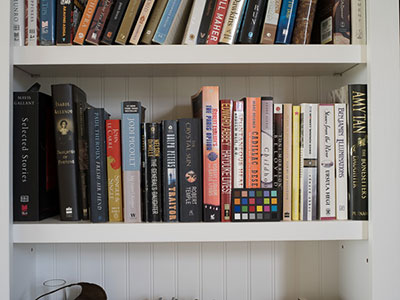
The crops below are shown at 100% and therefore here on-screen represent a very small part of the image. Note that if these images were printed to 13 X 17″ at 280 PPI you would notice noise at least one stop less than here on screen. Also note that no sharpening has been used on the raws.
What I see is that noise at ISO 200 and 400 is essentially invisible. It just starts to appear at ISO 800, and in making prints I would likely not even bother using any noise reduction. At ISO 1600 noise starts to become visible and bit of NR is needed. I would regard ISO 3200 as the highest regularly usable setting, so long as a modest amount of NR is used.
ISO 6400 is the edge of usability. At the end of this series I have shown a crop with a normal amount of NR and sharpening applied. Depending on the subject, this might or might not meet your needs. I regard ISO 12,800 and 25,600 as unusable for normal work.

ISO 200

ISO 400

ISO 800

ISO 1600

ISO 3200
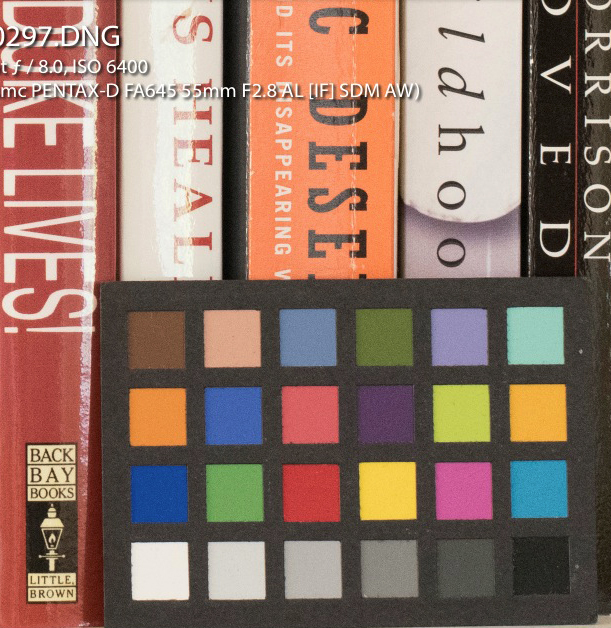
ISO 6400
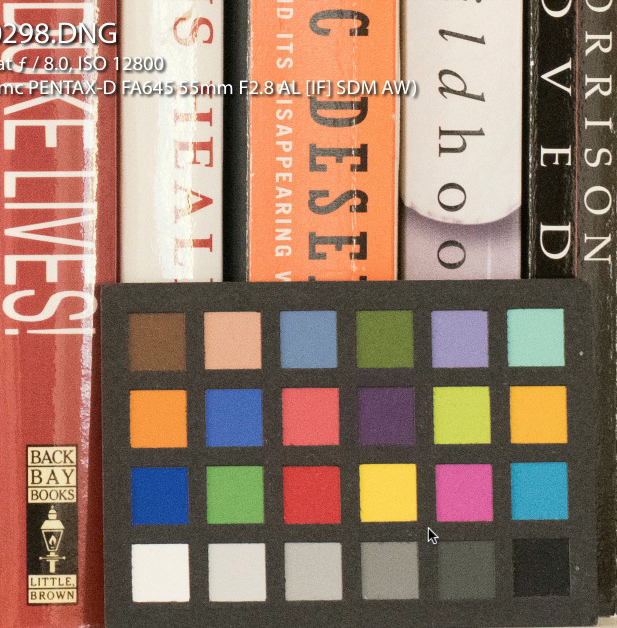
ISO 12800
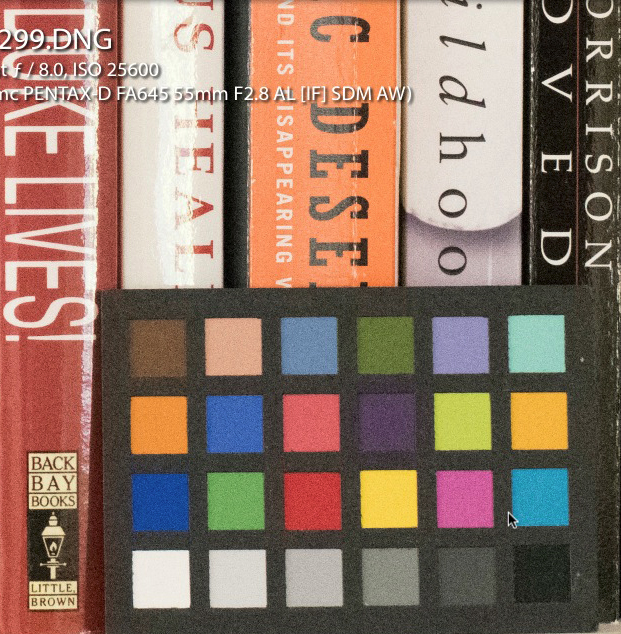
ISO 25600
Below is an ISO 6400 crop with a usual amount of noise reduction and sharpening applied. In a moderate sized print I find the image quite usable, and therefore I regard this speed as the highest at which I would use the camera.
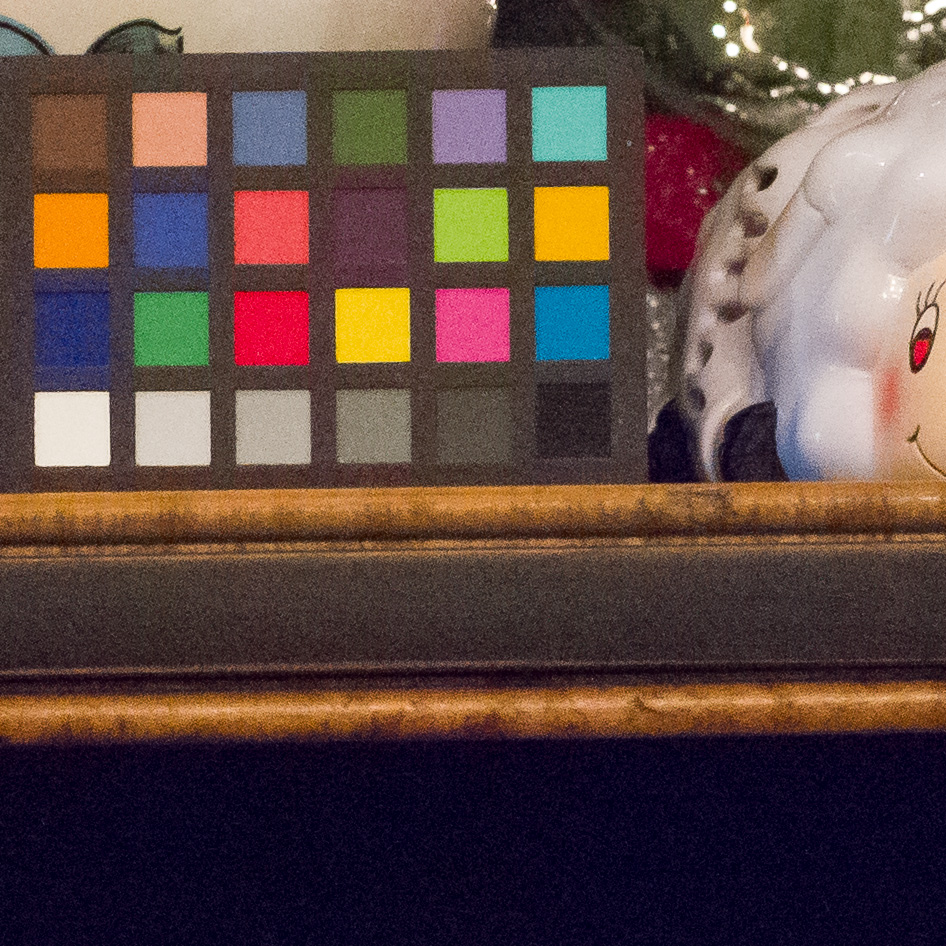
ISO 6400 with moderate noise reduction in Lightroom
Wait – There’s More
One of the problems when a camera as full-featured as the GH4, especially when it’s a stills / video hybrid, is that there are so many features that it’s impossible to list them all, let alone test them all without producing more than the typical reader will bother to read.
But just to touch on some important ones not mentioned here yet, there’s a built-in on-screen level operating on two axis, peaking with multiple settable levels, level settable zebras, auto EVF-OVF switching, time code generation, and Wi-Fi along with an i-App for controlling the camera remotely. There’s a magnesium alloy die cast body with weather sealing, and a new locking Mode dial.
I am also taken with the “Silent Mode” which instantly turns off everything in the camera than makes sound or causes visual attraction, and it puts the camera into electronic shutter mode. This makes the camera as silent as a point-and-shoot, and is ideal for wedding shooters, stage, TV and film photographers, and anyone else who needs to be unobtrusive when working.
And of yes, when shooting with the electronic shutter the camera can shoot full frame JPG stills at 40 frames per second. Pretty cool, if you ask me.
The Panasonic GH4 Is Available From B&H Photo
In Summary – For Now

Ferns. Toronto. April, 2014
Panasonic GH4 with 35-100 f/2.8X @ ISO 500
It takes at least a month of almost daily use to really take the full measure of a new camera, especially one as full featured and complex as the Panasonic GH4. But readers don’t want to wait that long to get the scoop, and I don’t need to take that long to draw some initial impressions.
To summarize the GH4 in a single sentence, I would say that this is a MFT system camera that is fully competitive in terms of features, functionality and image quality with anything currently on the market. It leaves little undelivered for stills work. If a 16MP image size is adequate for your shooting (and it is for mine), then you’ll likely find the GH4 a very practical and enjoyable stills camera.
When it comes to video, the GH4 is in a class of its own. There is nothing currently on the market, or even announced from any manufacturer, that can trump the GH4 when it comes to video in a DSLR / CSC form factor. This is the only camera of its type that can shoot 4K to an internal card, and which also features variable frame rates in HD mode. Note though that a U3 rated card is needed for the highest video bandwidth. These cards are still very pricy.
Oh yes – and at $1,699 the GH4 is nothing short of a bargain.
Am I getting one? In fact we’re getting two, and likely a third as well, replacing our GH3 cameras which we use for all of our video productions. I also expect one of the GH4’s to become my daily shooter for both stills and video, as well as serving as Chris’ workhorses for video production. No, I’m not kissing goodby to my Olympus E-M1, but let’s just say that for some purposes I’ll be getting a lot cuddlier with the GH4.
The Panasonic GH4 Is Available From B&H Photo
Michael Reichmann
April, 2014
You May Also Enjoy...
Triptychs Part 1 of 3: Fundamentals
Be who you are and say what you feel because those who matter don’t mind and those who mind don’t matter Bernard Baruch 1 -
Eclipse Competition
A Lunar Eclipse in Three ExposuresCredit & Copyright:Stephen Barnesskyoptics.netUsed with permissionThere will be a total lunar eclipse on the night ofMay 15-16, 2003. It will

